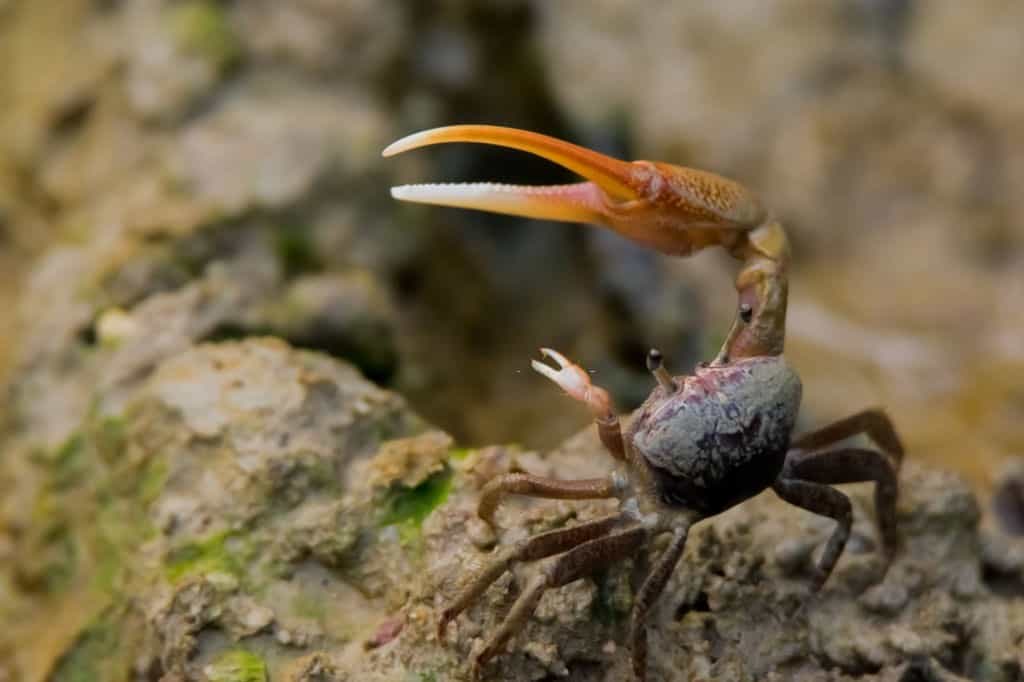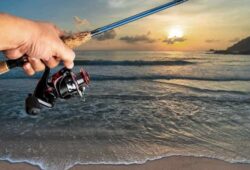Fiddler CrabLive bait is very effective to use, resulting in a lot more catches and success! If you’re aiming to catch sheepsheads, then you’ll want to use fiddler crabs, which are the best baits. What’s great about using fiddler crabs is that they aren’t only effective, but you can easily purchase or find them in the wild yourself.
However, you might be wondering how to keep fiddler crabs alive for bait? Read on as I show you the different tips you can follow.
Contents
How to Keep Fiddler Crabs Alive For Bait
Fiddler crabs are a great bait not only for sheepshead, but for redfish, pompano, tautog, permit, black drum, and even more! They usually travel by the hundreds, found in warm weather and low tides, scurrying on exposed mudflats.
They are easy to catch and keep alive, as all you need to do is to dig a hole on a sandbank and mud. Bury it with a bucket and you can bait it using this, squid, or fish viscera. In half an hour, fiddler crabs will go to your bucket!
Once you’ve gotten your hands on fiddler crabs, how do you keep them alive? Follow these tips:
1. Where to Store Them
Again, fiddler crabs are low maintenance and very easy to care for to stay alive. They don’t need anything fancy and can even stay in recycled plastic containers! You should mimic their natural environment as much as possible, which will be crucial to survival.
For anglers who need to keep their fiddler crabs alive during winter, you may want to get an old aquarium for fiddler crabs. Whether you use a container or aquarium, this is what you need to set up their home:
- Sand
- Dry lang
- Brackish water
There should be an area for brackish water so fiddler crabs can craw inside, which is required when keeping them for the long term. There should also be a sandy area just off the waters, with land so they can craw and escape form water.
The most important thing to consider is the salt in their water, as they are used to living near seawaters. Besides this, fiddler crabs should be kept at a temperature between 75-80 degrees Fahrenheit. They should NOT be cold.
2. What to Feed Them
Fiddler crabs are natural scavengers, feeding on organic materials they would find in mud and water. They can eat dead fish, crabs, shrimp, and/or other organic plant matter.
Do NOT throw whole shrimps or mullets to their habitat, as it will cause rancid smells. Instead, you can invest in crab food from pet stores that the crabs can eat. While they are usually made for hermit crabs, fiddler crabs will like it as well.
Besides this, anglers also feed their fiddler crabs fish food shrimp pellets. If you have the budget for it, you can also opt to use frozen shrimp.
Besides this, they also need to load up on calcium, which they can get from fiddler crab sheds and shrimp exoskeletons.
Fortunately, fiddler crabs don’t need to be fed daily so it minimizes the frequent tank cleanings. You can feed them either every other day or two to three times weekly. This is enough to keep them in good health.
As for their water, monitor the pH levels well. The acidity should be between 8.0 to 8.3 while the Carbonate Hardness should be between 150-350ppm.

3. Any Health Concerns?
Besides having a good home and food, you should also be wary about the health concerns of a fiddler crab. Sure, they won’t be a pet and stay alive for long until your next fishing trip, but you need them to stay healthy to attract your next catch.
There are different things to watch out for when it comes to their health:
- Male fiddler crabs can be quite aggressive, and if the enclosure is too small, they will be territorial and fight, injuring each other and detaching legs and claws.
- When you don’t change their water, there may be a foul smell, coming from improper water salinity or fungus that may kill the fiddler crabs.
- If your fiddler crabs aren’t eating, then change or adjust their enclosure to see if that keeps them alive.
- Fiddler crabs will die every now and then, so monitor the enclosure and dispose of the dead crabs to prevent any contamination with other live fiddler crabs.
4. Crab Molting
When keeping fiddler crab bait for long periods, the crabs will start to mold eventually. Fiddler crabs normally go through this process and it’s actually a good sign. Molting will indicate that your crab population is in good health and growing naturally.
The exoskeletons they molted out are also a great source of nutrients for the fiddler crabs. You just need to leave those exoskeletons in the enclosure for them to consume. If they lost any legs and limbs during the molting process, not to worry, as they’ll regenerate and regrow those lost limbs within weeks.
Read more: Awesome Tips When Catching Eels For Bait
5. Growing Their Population
For those who will keep their fiddler crab baits for even longer periods, then they may repopulate. However, it’s almost impossible to breed fiddler crabs when they are in captivity because of their life cycle.
Fiddler crab larvae would develop in deeper waters, migrating back to the shore in time. The water in enclosures isn’t deep enough for repopulation to happen, though it’s normal to find eggs on females.
If you want to learn more about keeping fiddler crabs alive, this informative video can show you how:
Wrapping It Up
Fiddler crabs make excellent bait and are actually very easy to keep alive! Fortunately, you won’t need to spend hundreds of dollars to buy and maintain them. So long as you follow the right tips, you can take advantage of them to reel in a ton of sheepsheads.
I hope that these tips on how to keep fiddler crabs alive for bait helped you out. So don’t wait any longer and start following these tips now!




